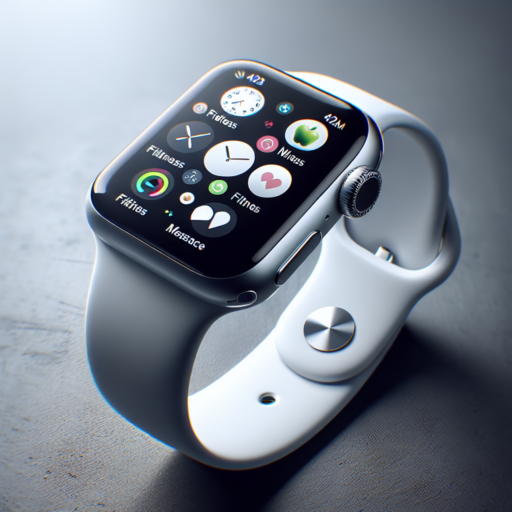How good is Apple Watch as a running Watch?
The Apple Watch has established its name well within the sphere of modern technology, particularly among fitness enthusiasts. It’s no doubt that Apple has integrated more than just the simple timekeeping feature on their watches; they’ve also included a handful of wellness applications, among which, its fitness tracking capabilities stand out.
Reliable Comprehensive Running Features
For runners, the Apple Watch invariably offers a comprehensive suite of features to track and improve their performance. It comes with a built-in GPS system that accurately measures your speed, distance, and route. Furthermore, the heart rate monitor gives you real-time analysis of your heart rate, which can be vital in optimizing your running strategy. Also, the Apple Watch stands out for its ability to display the pace of a runner, an essential feature for better performance assessment and goal setting.
Advanced Health Tracking Capabilities
Moreover, Apple developers have taken health tracking to a whole new level. The watch features an ECG application that generates an EKG-like graph, which could help detect irregular heart rhythms potentially indicating health issues. This, along with features like the Blood Oxygen app and Sleep app, provides comprehensive health monitoring, making the Apple Watch not just a running watch, but also a powerful wellness device.
Inimitable User Experience
However, it’s not just the advanced features that make the Apple Watch a popular choice for runners. The user experience, including the intuitive interface, ease of navigation, crisp display, and seamless synchronization with other Apple devices, is unparalleled. It is enabled with Siri so that runners can operate the watch without having to stop midway during their workout. This makes it a truly hands-free, user-friendly running companion.
How to use Apple Watch as a running Watch?
The Apple Watch isn’t simply a fashion accessory. With its built-in GPS, heart rate sensor, and fitness monitoring capabilities, it’s a powerful tool for runners of all levels. To use your Apple Watch as a running watch, you need to understand its features and the appropriate way to use them.
Setting Up Your Apple Watch for Running
Before hitting the track, it’s important to ensure the Apple Watch is set up correctly for running. Open the Apple Watch app on your iPhone, navigate to the ‘My Watch’ tab and tap ‘Workout.’ Here, toggle on ‘Running Auto Pause.’ This feature will automatically pause the workout when you stop moving and resume when you start running again. To monitor your heart rate and pace, ensure these settings are enabled under ‘Metrics.’
Selecting a Running Workout
After binding your watch, launch the Workout app on the Apple Watch. Scroll down on the workout types and select your preference. For runners, you can choose from outdoor run, indoor run, outdoor walk, and indoor walk. After selecting your preferred workout, set the goal — you can use distance, time, calories, or open goal as metrics. Once set, tap ‘Start’ and commence your run.
Using Other Useful Features
The Apple Watch also offers several additional features that can help you fine-tune your running technique and boost your performance. For instance, the cadence feature helps track your steps per minute, providing feedback on your running gait. The roll pace feature gives you information about your previous mile pace and how to adjust your speed for better performance.
Is it OK to run with Apple Watch?
The Apple Watch is more than just a time telling device; it has transformed into an essential fitness tool with capabilities extending beyond the norm. The question many joggers and runners ask themselves revolves around its efficacy – is it okay to run with an Apple Watch? The simple answer is, absolutely. However, understanding the features and functionalities that make it an excellent running companion is essential.
Fitness Tracking Precision
One significant advantage of the Apple Watch is its precise fitness tracking abilities. With built-in GPS capability, pace alerts, and cadence tracking, the watch is tailored to provide detailed and accurate data about your running sessions. It helps you analyze your performance, distance covered, speed, and heart rate during your run. This comprehensive data can help lead to more informed decisions about your training and can promote better performances in the future. Therefore, running with an Apple Watch can enhance your overall running experience by providing you with reliable and accurate data.
Integrated Health Features
The Apple Watch isn’t just about tracking your run, it also has a wealth of health features that aid in wellness. The watch hosts a myriad of health-oriented features, such as ECG monitoring, which provides real-time data on your heart rhythm and can alert you to potential irregularities. There’s also a sophisticated sleep tracker that can help athletes monitor and enhance their recovery time. These integrated features make running with an Apple Watch not only beneficial but also super safe for athletes of all levels.
Robust and Durable Design
The Apple Watch is designed with durability in mind, perfect for the wear and tear it might face during runs. It’s sweat-resistant and water-resistant, up to 50 meters, making it suitable for both dry and wet running conditions. The watch can also withstand occasional jolts and impacts that may occur during a run, making it a robust companion for your fitness journey. Therefore, not only is it acceptable, but it’s actually a brilliant idea to run with an Apple Watch.
Why do runners not like Apple Watch?
Critics might argue that the Apple Watch is a paragon of style and features, but to the runner’s discerning eye, it might not tick all the necessary boxes. A number of reasons contribute towards a lukewarm reception of the Apple Watch by runners, who have a unique set of requirements for their wearable devices.
Inaccurate GPS
Arguably the most vital tool for any runner is a reliable GPS. Precision in tracking speed, distance, and route can make or break the running experience. While the Apple Watch is equipped with its own GPS system, many runners have complained about its lackadaisical performance. Compared to specialized running watches, Apple’s watchroutinely logs shorter distances and tracks slower paces. This has been attributed to the Watch’s weak GPS signal.
Battery Drains Quickly
Long distance runners often need their watches to sustain through marathons, trail runs, and even ultra-marathons. Such strenuous activities demand a robust battery life, so when the Apple Watch’s battery drains rapidly when GPS is in use, it can be disheartening for the serious runner. Additionally, when several apps are in use alongside the GPS tracker, the impact on the battery is further exacerbated. Consequently, the Apple Watch falls short of being the ideal running mate on extended runs.
Over-Reliance on iPhone
For a runner, every ounce of weight matters – a fact the Apple Watch seems to overlook by over-relying on the presence of an iPhone. Several valuable features remain inaccessible without the phone, a glaring inadequacy for runners who would prefer not to lug around a phone on their runs. This over-dependence on the iPhone undermines the watch’s standalone usability, particularly irksome for those seeking the liberating experience of a hands-free, lightweight run.




![Apple Watch SE de 2.ª generación, 2023 [GPS] Smartwatch con Caja de Aluminio en Color Medianoche de 44 mm y Correa Deportiva Color Medianoche - Talla M/L. Monitor de entreno y sueño, Pantalla Retina](https://m.media-amazon.com/images/I/41ICKWXb72L._SL160_.jpg)




